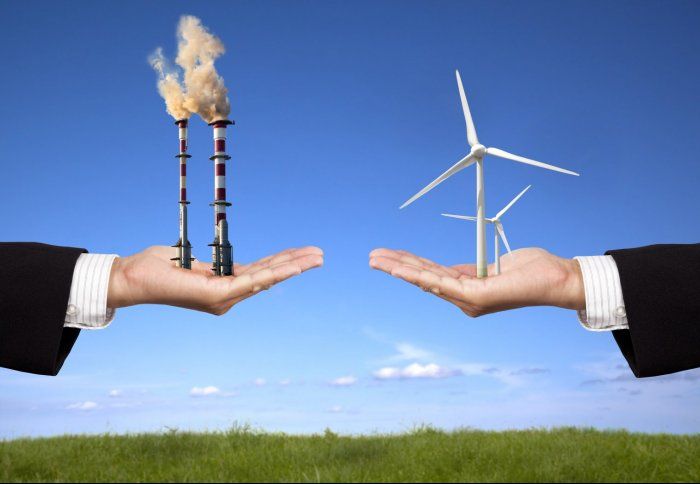Colonising other planets, Martian cuisine or going green, what is the answer?
Teresa Romanovsky • June 24, 2021
So far, we have managed to exploit animals, create untold pollution, devastate our beautiful ecosystem, overpopulate and create a trainwreck of unimaginable proportions. There is little wonder that scientists are considering a mass-evacuation to the red planet known as Mars. The surface lands of Mars are not hospitable due to high levels of radiation, reduced air pressure, less than two per cent oxygen and temperatures that resemble an average day in Antarctica. Real estate would comprise of complex life-support systems and not the glorious ocean views, desert scapes or lush forests that we have now. There are indications that water once flowed on Mars; gullies and dry lake beds scar the planet, but they are long gone.
Food for thought
Space experts and aeronautic organisations reassure us that the barbarous food chain currently on Earth will not be transferable to Mars. There will be no animal agriculture. Why? It's not practical or ethical. The food system on Mars has to be more humane. Should we flee what we have done and leave behind an array of cruelty, malevolence and destruction? Or should we try to make amends and find an alternative solution? Instead of allowing Mars to give us a second chance, let's explore what we can do here on Earth.
Diet of man or Martian
Researchers at Japan's Institute of Space and Astronautical Science foresees the Martian diet to be primarily plant-based and hydroponically grown in a controlled environment. Scientific farmers will extract water for the non soil-based technology from the surface of Mars. The innovative system conserves crops and protects them from harsh Mars weather systems, radiation and other planet-centric phenomena. For staunch-meat-eaters, there will be a range of insect meats, cultured meat products and algae-based alternatives. Cultured meat products will allow for the absence of animal agriculture and satisfy cravings without causing harm to another sentient being, with no environmental damage or disease.
Earth solutions
Vast injections of investment are already being powered into creating a more sustainable Earth. Eat Just, Inc is a prime example of cutting-edge science and technology that delivers healthy, sustainable foods to our tables. For the very first time, breakthrough high-quality meat has been created directly from animal cells for safe and cruelty-free human consumption. Cultured meat is legitimate animal meat or seafood produced by directly cultivating animal cells. The scientific production method eliminates the need for any animal suffering and raising farm animals for food.
Interestingly, Sir Winston Churchill, in 1931 wrote in 'Fifty Years Hence' an article in the Strand Magazine where he imagined a futuristic world. "We shall escape the absurdity of growing a whole chicken in order to eat the breast or wing, by growing these parts separately under a suitable medium". He wasn't far wrong. Just last month, the Singapore government introduced the Eat Just Good Meat brand into their approved food ranges.
Eat Just food is an extraordinary breakthrough for the global sustainable culinary industry. Singapore already boasts an exemplary reputation for enterprising solutions that advance environmental stewardship and is a world leader in business, technology and culinary innovation.
Lab to table
Numerous scientific reports show that cultured meat has a much less harmful impact on the environment. The figures are staggering. Livestock production alone is responsible for almost 15 per cent of greenhouse gas emissions. Energy consumption could be decreased by more than half, and cultured meat production uses 100 times less land required to rear livestock. Founder of Eat Just, Josh Tetrick, explains, "I care deeply about mitigating climate change and about preserving biodiversity. But there's something deep in our value system about behaving in a kind and caring way, and our food system should represent that".
Scientists, governments and consumers need to address the current challenges to make cultured meat widely available and cost-effective; this relies on regulatory approval, scale and consumer education.
Butcher to inventor
Clever and thoughtful inventions have the power to change the world (and Mars), and Earth needs this more than ever. If our eating behaviours do not change, we will not sustain life on this Earth. Food and invention go hand in hand, and cellular agriculture is at the forefront of science and a 21st-century revolution. By scientifically growing animal cells for meat cooperatively, we can allow for a cruelty-free movement. Although cultured meat is still meat, it brings no harm to the planet or animals.
This entirely new movement has brought around an exciting category of cruelty-free careers. A food inventor is not just one person or sector; it embraces a myriad of experts such as biochemists, material, sensory and food scientists, chefs and operational, production specialists and many we have yet to meet or name. Teresa Romanovsky from Careers for Purpose is experiencing an upsurge in innovative high tech start-up businesses seeking unique skill sets from software developers and various food inventors.
The alchemist
The new career path can only be described in the words of Bob Weis, President of Walt Disney Imagineering "We dare ourselves to think beyond what's possible. To defy imagination. And to do things that have never been done. That fearless creativity is in our DNA and directs the incredible, immersive experiences we create around the world". Excitingly, the new movement is developing to collectively accommodate our new, more responsible and empathetic behaviour.
The European Space Agency is already working with a start-up food company and developing food technology capable of producing edible protein out of nothing but carbon dioxide, water, electricity, and a few trace elements.
The cultivated future
Building a food system from scratch means that not only can animal cruelty be a thing of the past, but that nourishment can be distributed equally to humans. We can collectively focus our efforts on kindness, affordability and accessibility instead of focusing on the bottom line, cheap labour and profit.
Perhaps we don't have to move to Mars after all.


Recruitment may not be the first industry you think of when it comes to carbon emissions. Yet the environmental footprint of traditional hiring practices is larger than many realise: flights for interviews, paper-heavy processes, in-person assessments that involve travel and energy use. All of these add up. At the same time, “sustainable recruitment systems” are proving to be far more than a buzzword. They are helping organisations reduce waste, attract values-driven talent, and future-proof their workforce strategies. In other words, green hiring is both a moral and a commercial imperative .

At this year’s ReGen Expo , the programme was thoughtfully divided into two key tracks: The Resource Stage , focused on innovations in recycling and resource recovery. The Circularity Stage , showcasing upstream redesign, system change, and regenerative business models. Both matter, but they’re not the same. Recycling plays a critical role in reducing what ends up in landfill. But circularity reaches further, asking how we might design waste out altogether . In short: If recycling is like treating the symptoms, circular processes are like building a lifestyle that prevents the illness in the first place.

A Sobering Reality Check Australia’s emissions reduction report card is in, and it makes for uneasy reading. Strip away land use changes, and national emissions have dropped just 3% since 2005. While federal targets remain focused on achieving net-zero by 2050, progress is painfully slow across energy, transport, and industrial sectors. Politicians may debate policy, and analysts may point to infrastructure bottlenecks, but there’s a more human variable we urgently need to talk about: talent. Could the decarbonisation lag be less about ambition and more about our inability to scale the workforce to match?
